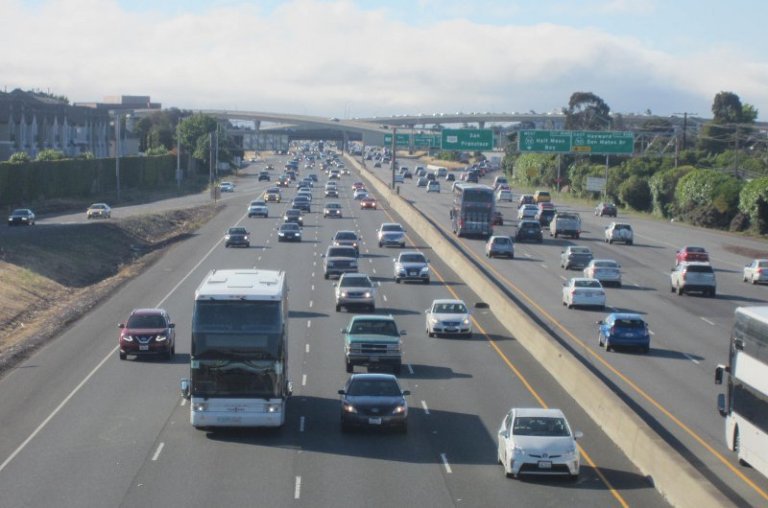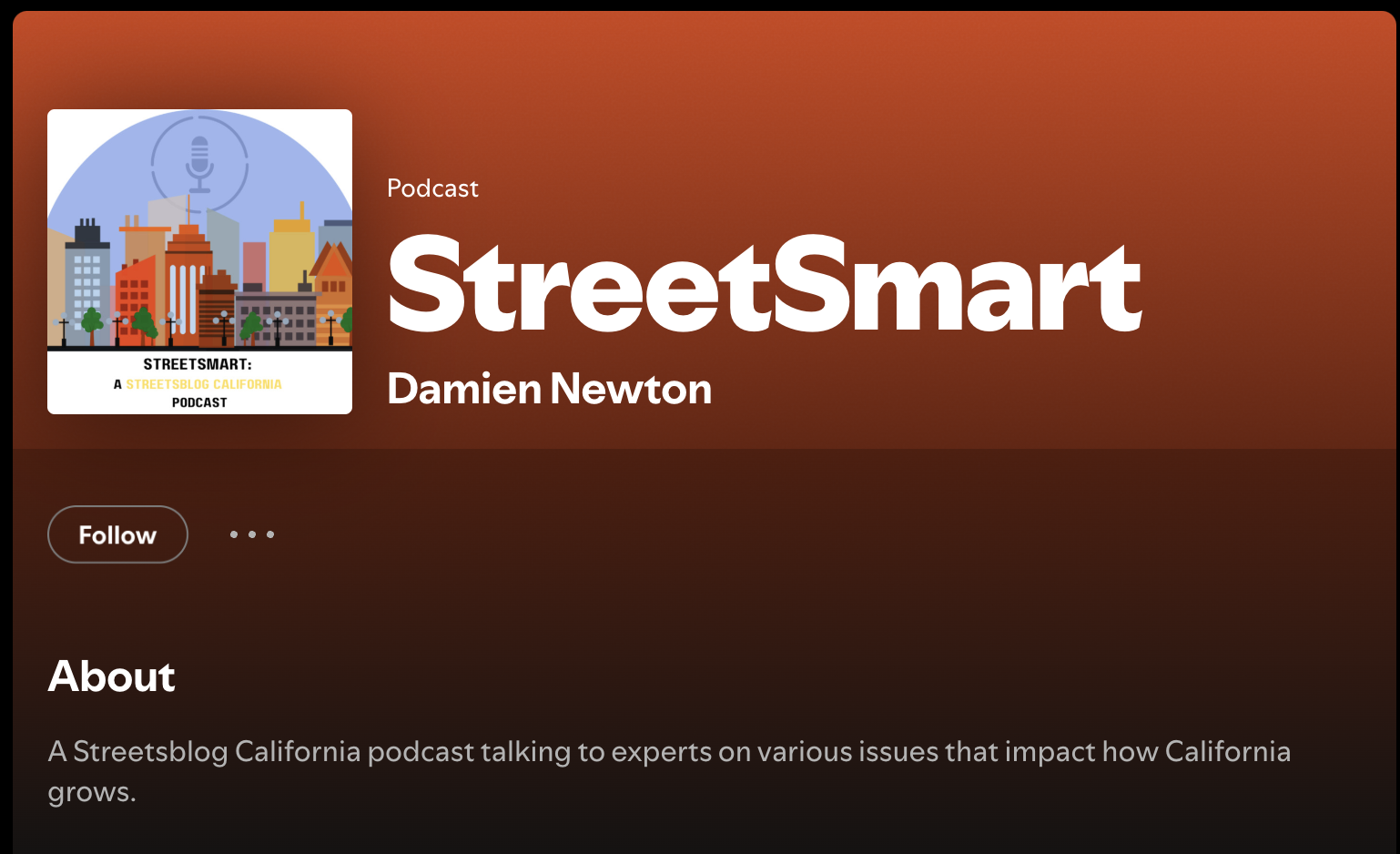Still seeking to widen Highway 101 from eight to ten lanes, Caltrans and San Mateo County’s transportation agencies are now halfway through the required environmental review. At a community meeting on Wednesday evening, agency officials gave an update on the project [PDF] to widen the highway by adding express lanes, which allow buses and carpools for free but charge a fee to solo drivers during congested hours.
“The goal here is to make a consistent travel time for carpools and buses,” said San Mateo County Transportation Authority (SMCTA) Deputy Project Manager Leo Scott at the meeting. "If we can do that, we incentivize the movement from single occupancy cars to higher occupancy vehicles.”
But at the same time, widening the highway to ten lanes does exactly the opposite, creating more space for more single occupancy vehicles - Caltrans is expecting the number of vehicles on Highway 101 to jump from between 4 and 7 percent in just the next three years. Most of Scott’s presentation addressed how ten through lanes can be squeezed into the limited space available, a strong hint that county and state officials favor widening the highway rather than addressing congestion by providing better bus and carpool services.
“An auxiliary lane begins and ends at on and off ramps, it doesn’t go through… we actually will literally pave through the interchange and connect the auxiliary lanes to create a through lane,” explained Scott. “We are actually looking at re-aligning the freeway, taking the center line and moving it, typically to the west, and what that allows us to do is create more width.”
Caltrans officials are at least allowing an option that would avoid widening the highway but still provide increased capacity by converting an existing lane in each direction to an express lane to be studied the project’s environmental impact report, although the focus of the planning work so far indicates they aren’t serious about that option.
“Most of the presentation focused on challenges related to physically widening Highway 101 - shifting lanes and relocating sound walls,” said TransForm Senior Community Planner Chris Lepe after the meeting. “Scant attention is being paid to the major increases in bus and carpool use that are needed to make the [express] lane conversion option work.”
Converting existing lanes to express lanes rather than widening Highway 101 would save about $200 million, money that could be spent on boosting SamTrans’s bus service, further Caltrain upgrades beyond electrification, and other transportation demand management programs in San Mateo County. But officials were silent at the meeting on the details of how transit could help alleviate traffic congestion, or how to pay for better transit, only stating that a separate study of highway bus service had just begun.
In 2010 SamTrans eliminated nine of its ten express bus routes that comprised an entire network of public transit on Highway 101. These routes ran between San Francisco and Pacifica, Colma, Foster City, San Mateo, Redwood City, San Carlos, and Palo Alto during weekday commute hours. Given the prospect of continuously free-flowing express lanes on the highway, the agency is now reconsidering its decision to kill off its highway bus service. But even SamTrans doesn’t have high hopes, estimating that express buses would only contribute roughly one quarter of the mode shift from automobiles to buses that’s needed for the lane conversion option to provide as much total passenger capacity as widening the highway.
“The one promising thing that’s working in our favor is the reverse commute,” said SamTrans Director of Planning Douglas Kim, referring to the increasing numbers of workers who live in San Francisco and commute to workplaces in San Mateo and Santa Clara counties. This trend means robust ridership for highway buses to and from San Francisco during both the morning and evening commute periods.
But officials are skeptical that any additional revenue will be available to pay for express highway buses.
“How would the tolls revenues be used?" asked Scott. "First it’s going to cover any financing, then it would go to pay for the operating and maintenance of the facility, and then the revenue would be available for transit in the corridor.”
No other sources of revenue for better bus service or other transportation demand management programs has been identified. Money for widening the highway has better prospects, and could be paid for using the San Mateo County Transportation Authority’s Measure A, the recently passed California Senate Bill 1, and/or other state funds.
San Francisco and Santa Clara counties are also pushing ahead with studies to add express lanes to Highway 101, that if constructed would stretch from downtown San Francisco to Morgan Hill, completing a major segment of the Metropolitan Transportation Commission’s network of envisioned Bay Area Express Lanes.
The current $11.5 million environmental impact report for express lanes on Highway 101 in San Mateo County is expected to be finished in January 2018. Caltrans will host a second community meeting on the project this Monday, June 5 at 6:30 pm at Redwood City City Hall, 1071 Middlefield Road, Redwood City.






